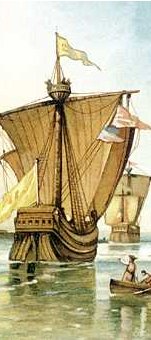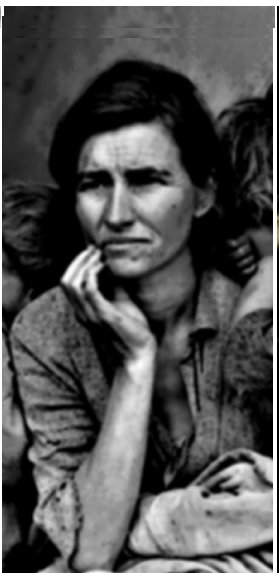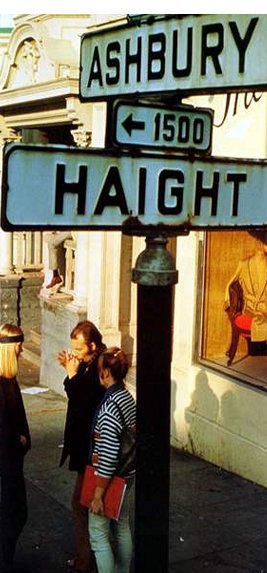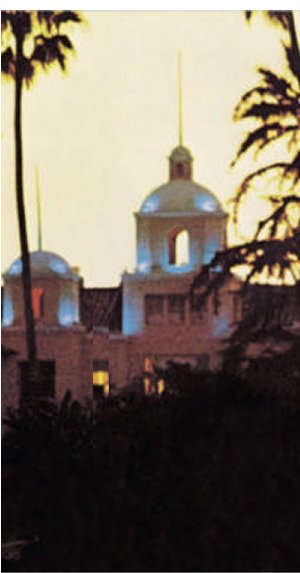It All Started With a Book Chelsea Sutter
Dydia DeLyser
was born and raised in Southern California. She is an
assistant professor of Geography at Louisiana
State University.
She is a frequent writer of California
history and Ramona holds a special place in her heart. After sharing their
first kiss at ¡§Ramona¡¦s Birthplace¡¨, DeLyser and her
boyfriend were forevermore fond of the story that inspired her book. She has
also been published multiple times for articles in numerous historical
journals.
Media
has always had a way of taking something no one knows about and turning it into
the latest trend. Be it the latest from the paparazzi or a new political
scandal in the white house, as soon as it is released to the public, it starts
a wave of information and curiosity in the readers that encounter it. In 1884,
when an ambitious woman, Helen Hunt Jackson, took it upon herself to create a
historical fiction about the plight of the American Indians, the heroine of the
story: a beautiful, young, Half-Indian, Half-Scottish woman living in Southern
California, became the fabulous star of the era. When the book was read by
masses, a desire to travel to the fantastic locations described by Jackson
seemed to sweep America.
Jackson¡¦s attempt at ¡§an Uncle Tom¡¦s Cabin for Native Americans¡¨1
quickly became the reason many made the pilgrimage to the west. Along with the
help of lower locomotive fares and the rise of automobiles, tourism grew to be
the newest fashion in the United States.
Everyone who was able took the plunge and traveled out west. They came by
train, they came by car, and they came in crowds. If they didn¡¦t make an effort
to visit this new iconic location, then they weren¡¦t really living. At that
time, vacation became the newest form of showing their life off and enjoying
time with their family. It all started with a book and spun into a wild race
make Ramona a reality. A review on this book and how it effected California
was written by Dydia DeLyser,
she fondly titled her work Ramona
Memories.
Helen
Hunt Jackson wrote many publications before creating her masterpiece ¡§Ramona¡¨.
She began writing poems and other works after the deaths of her first husband
and two children, all of disease, but had secluded herself from the world and
deprived the public of the once ¡§vivacious personality¡¨2 that she
was known for. After the death of so many people in her life, she didn¡¦t know
what else to do but blame herself. Her life became one long tortured night
waiting for someone to save her. Most of her poetry she filled with deep
depression and it would have made anyone tear up. After having a rocky start to
life, everything seemed to look up for her eventually. She met the man of her
dreams, again, and when she finally remarried she continued to write and
eventually discovered her passion for the Native
Americans and their misfortune, especially in Southern California.
Originally she firmly refused the idea of writing for a cause; she thought that
it was almost selling out to use your writing ability towards something only
small groups cared about. But after several trips to California,
this ¡§devoted crusader¡¨3 knew she had to do something. At first, she
wrote straight facts and did everything she could to get people to read them.
Her information, though accurate and saddening, just couldn¡¦t be compelling
enough to grab the attention she craved for her cause, at least not through her
medium of literature. After failing with her first tries, she knew that the
only way to get the readers she desired would be to create a fiction that would
capture their emotions and keep them gripped on the story, with underlying
tones of her cause weaved throughout. The book defiantly received the attention
Jackson had hoped for, but not
quite the response. People were gripped by the story, the love affair brought
tears to their eyes, and the descriptions of Ramona¡¦s homeland sang to their
hearts and drew images in their imaginations that would haunt them until they
were seen with their own eyes. But that was only one part of her plan; the
other was ignored all together. Instead of reacting to her call to action and
helping the Native Americans, people swarmed to the coast and added to the
problems. Jackson died feeling that
she failed; however, she will forever be remembered as the woman who created Ramona¡K and inadvertently created Southern
California.
While
the popularity of the book spread through the nation, the average citizen¡¦s
ability to travel grew rapidly as well. The use of trains had once been
reserved for business and luxury and for the upper-class only, but not for
long. As fares went down and the longing to journey across the land grew,
tourism became almost ¡§a patriotic duty¡¨4. People hungry for adventure became
impassioned by the story of Ramona and flocked by the thousands to see the
young woman¡¦s homeland. They gathered their families and took off in search of
the new adventure set in store. Most used trains but some of the more
successful families traveled in the new luxury and comfort of their own family
car. The idea of being able to move about the country with freedom and pleasure
gave the American citizen a new sense of love for the world they lived in.
As
quickly as they came, tourists made it a goal to pinpoint exact locations
written about in Jackson¡¦s book.
Lucky for them, the descriptions in Ramona
were so precise to what Jackson
saw that it took no time at all for claims to be staked on the ¡§Home of Ramona¡¨5,
her birthplace, and even where she and her lover eloped to get married. There
were several candidates for each of the locations, but over time each became
permanently established in the place that the most tourists visited. Rancho Calmulos became known as her true home. Many people
ventured to experience the beauty of the place depicted in the story. The
marriage place was the next big thing to be sought out. Whether visitors took
pictures, carved their names into the historic walls, or even had their own
wedding ceremony at the site, Ramona¡¦s marriage place is still a ¡§spot of
romantic reflection¡¨6 largely visited to this day.
Unlike the other two, the established place of Ramona¡¦s birth no longer stands
and wasn¡¦t nearly as popular as other locations along the coast.
A
big draw for tourists was the constant search to discover the real Ramona. It
seemed that any woman of Indian descent was up for grabs as the fictional
heroine everyone had come to know and love. There were several theories as to
who the true woman was. Some believed she was a woman that Helen Hunt Jackson
had met on one of her visits. Others thought that the character had been a
compilation of many women and the name was taken from the daughter of one of
the author¡¦s friends. Either way, women all over Southern California
began to come out as the real Ramona and cash in on the belief of the tourists
they were visited by. ¡§Ramonaphiles¡¨7 never would relent on finding
the truth. Some literally took the name to the grave. In one case, a woman and
her loved were buried side by side with tombstones saying the names of both
Ramona and her lover from the story, Alessandro. Their true ¡§lives were
virtually erased to allow the fiction of the novel to flourish¡¨8;
while they were forgotten forever, the story lived on.
Another
person who decided to cash in on the Ramona story in California
was Robert Callahan. However, his motives were different than the majority who
just did what they could to make a quick buck. Callahan had an obsession with
the story and wanted to do whatever he could to share it with whoever he could.
His master design was, of all things, a theme park. The Ramona theme park, he
said would be ¡§the most interesting spot in California¡¨9
and include everything about the famed story within its walls. He took out a
loan and put down a million dollars on a plot of land before he began
construction. Sadly, the park never became a reality. After Callahan¡¦s untimely
death, his wife sold the land to be a trailer park instead. Now, only a few
small pieces of his ¡§ambitious¡¨10 dream are still in existence.
Several years after the failure of the theme park, the idea of a Ramona Pageant
came about. Upon its opening ceremony, thousands came ¡§to witness the first
outdoor dramatic incarnation of Jackson¡¦s
novel¡¨11. The show was a flat out success. Using only low budget
actors from nearby areas they were able to create a show that still runs
annually in Hemet outside Riverside.
The
name Ramona was used on anything and everything to attract tourists willing to
pay whatever it took to have a piece of the magic that was the Ramona story.
From places claiming to be in the story to people claiming to be characters to
souvenirs designed to replicate small things in the book, if that name was on
it, someone would buy it. This became the tourism of that time. It has always
amazed people who study humanity how the band wagon idea is so easily bought. A
book comes out, everyone and their mother reads it, massive groups of tourist
move across country just to experience something that never really existed. No
one had set out to create a new page of history by ¡§the very actions of tourists
enshrined Ramona¡¨12 and its many landmarks.
The author of this book, Dydia DeLyser, an assistant professor of geography at Louisiana State University.
DeLyser believes that ¡§Jackson¡¦s
work of fiction changed how people remember Southern California¡¦s
past¡¨13. Even though things like the gold rush really started the
growth of California, this one
fictional story brought the eye of the nation back to the almost forgotten Southern
California and gave it a new birth. When she wrote Ramona Memories, her goal of showing
exactly how much of an impact Helen Hunt Jackson had made. In her eyes, Southern
California wouldn¡¦t be what it is today if it weren¡¦t for this
monumental tale.
DeLyser seems to be very educated and, because of her
profession, has an interesting point of view on the whole thing. Most of her
interest is with the locations and the way California
was molded to fit the story and found that ¡§descriptions exoticized
the landmarks¡¨14. (The book was published in 2005 so DeLyser had the opportunity to use modern technology, like
the internet, to help with her research.) Her information is more accurate now
than it would have been if she had written it earlier. She most likely wrote
the book in response to the large focus on tourism in our country and others.
What better way to look into a subject than to see where it originated.
Apparently,
DeLyser greatly admires Helen Hunt Jackson and her
novel. In the first few chapters of the book she refers to Ramona as a ¡§gifted woman¡¦s compelling genius¡¨15. Although
she addresses the fact that Jackson
believed her own work was a failure, the way DeLyser
writes seems to suggest that she would disagree with Jackson.
She complements Jackson¡¦s writing
style often and includes many small excerpts to show descriptions of locations
and give a feel for just how beautifully the story had been written, and why it
was so beloved.
DeLyser herself has a very fond attachment to the story
that would explain her feelings to write on it. According to the article she
and her boyfriend shared their first kiss at Ramona¡¦s birthplace and ¡§she¡¦s
been under Ramona¡¦s spell ever since¡¨16. The writer of the article
felt that ¡§DeLyser¡¦s work speaks to the book¡¦s
continuing national reach¡¨17 and agrees that Ramona still greatly impacts Southern California.
Books
have always had the power to make massive impacts on people, but for a small
historical fiction to move people so much as to journey across country for a
glimpse of a familiar passage painted in a landscape is incredible. When crowds
arrived in Southern California to find the land
¡§enshrined in fictional elements¡¨18 and were not disappointed they
took that back and continued to tell more and more people to come and visit the
magical coast that was Southern California.
Although
at this time California did not
seem to be influenced by outside events of the east, it certainly did spark
some events of its own. When the book was released in the United
States it was read by citizens of every
class and age. It sparked a new love for fiction and travel and people went
Ramona crazy. The book itself was partially responsible for the massive growth
of the western part of the nation. Those who had spent their whole lives in a
city somewhere east began packing up their families, loading up their luggage,
and setting out to start a new life in what seemed to them to be a whole new
world. For so many years California
had just been seen as a place on the other side of their country. Now, it was
as if Helen Hunt Jackson herself had reached out, grabbed California
by its boarder and pulled it close enough for the urbanites of the east to
smell its briny ocean - and the smell alone was not enough. A new thirst for
travel and adventure became almost an ¡§obligation of American citizenship¡¨19
and everyone wanted in.
Unlike
the rest of the nation however, no matter how many tourists came to California,
it was still a world of its own. The ¡§phenomena¡¨20 of so many new
people and places to visit didn¡¦t change the fact that the land was almost
untouched and beautiful in every way. The Native Americans, though mistreated,
were very alive in California and
for the most part seen as people, not savages. The way of Californians was also
very different. Where most places in America
were wrapped up in big city life and booming populations, Southern
Californians were able to enjoy the nature around them. Many lived
in smaller towns and raised families on their little farms. The agriculture of
the area was very successful because of the constantly pleasant and calm weather.
Farmers couldn¡¦t ask for a better climate to work in. Those who came out for
Ramona usually ended up staying because California
itself was so nice.
Throughout
history, books have made a huge difference in the way average people view the
world. Be it fiction, history, or even fantasy, the words in a book can
completely change the way an individual sees things. When a book comes out
about an event and shows a new way to look at it, people pay attention and
sometimes their views are swayed. Even books like Harry Potter or Twilight
enter the minds of the younger generation that love them and create almost an
atmosphere of reality within the magic. Not only do the readers long for the
reality, they sometimes produce it for themselves. As DeLyser
so elegantly pointed out, ¡§Ramona lingers here still¡¨21 and to this
day a simple fiction has been spun into a reality for many. Tourism and the
love of a single book created the Southern California
that we know and live in today. Although we as individuals may not realize it,
today we live in the reality of Ramona¡¦s world. It was made by those who came
before us and set it up because of their passion for the novel. If Helen Hunt
Jackson hadn¡¦t written her great failure, the success and fame of California
might never have been.
1. DeLyser, Dydia.
Ramona Memories. Santa Fe,
New Mexico: University
of Minnesota Press, 2005. Page ix.
2. DeLyser, Dydia.
1.
3. DeLyser, Dydia.
6.
4. DeLyser, Dydia.
32.
5. DeLyser, Dydia.
65.
6. DeLyser, Dydia.
101.
7. DeLyser, Dydia.
121.
8. DeLyser, Dydia.
133.
9. DeLyser, Dydia.
154.
10. DeLyser, Dydia.
159.
11. DeLyser, Dydia.
137.
12. DeLyser, Dydia.
182.
13. DeLyser, Dydia.
ix.
14. DeLyser, Dydia.
71.
15. DeLyser, Dydia.
xvii.
16. Showley, Roger M. ¡§A novel
approach to our lifestyle¡¨. San Diego Union-Tribune.
June 2005.
17. Showley, Roger M. ¡§A novel
approach to our lifestyle¡¨. San Diego Union-Tribune.
June 2005.
18. DeLyser, Dydia.
xvii.
19. DeLyser, Dydia.
48.
20. DeLyser, Dydia.
174.
21. DeLyser, Dydia.
188.










